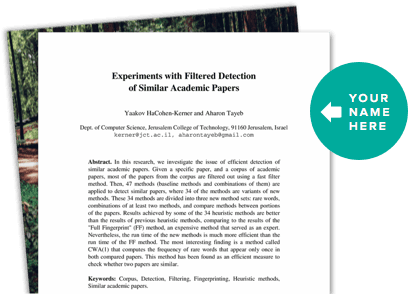About This Project
The relations between herbivores, coral reefs and vegetated beds will be evaluated through the dynamics of herbivory halos, areas with sparse or absent vegetation nearby reef patches, and the impact of spatial connectivity on the foraging patterns of reef fish in the Abrolhos archipelago. Integrated analysis of herbivore-producer interactions provide indicators of how ecosystems function and how it may be impacted by anthropogenic effects—crucial information for conservation plans.
Ask the Scientists
Join The DiscussionWhat is the context of this research?
Herbivory in marine systems can directly affect plant biomass and provide benefits by consuming epiphytic algae on seagrass leaves and controlling algae in coral reefs, thus favouring coral species in the competition for space. Herbivorous species can modify the environment, as observed in the formation of grazing halos - sandy areas with intensive foraging in the meadows surrounding reef patches - driven by increased predation risk at greater distances from the reefs, which herbivores use as refuges. Moreover, marine spatial configuration and complexity can influence the composition and abundance of herbivorous reef fish. Thus, higher connectivity among habitats in the marine landscape enhances energy flow between coastal ecosystems, resource availability and ecological functions.
What is the significance of this project?
Identify and map halos can provide insights into the functioning and changes in the reef and surrounding communities, also serving as an additional tool for reef areas monitoring. In this way, we hope that continuous detection of grazing halos can be incorporated into future analyses and monitoring of reef composition and abundance of herbivores and predators in the Abrolhos Park. Herbivorous reef fishes can exhibit different movement patterns and resource requirements depending on environmental connectivity between habitats. The presence of varied foraging patterns and resource uses of species throughout the marine landscape displays the requirement to incorporate connectivity potential between habitats as essential information for management and conservation planning in the marine parks.
What are the goals of the project?
To detect and estimate the spatiotemporal changes in herbivory halos in the Abrolhos Marine Park, we will analyse the purchased satellite images in a 20-year time series. The results will be compared with previous visual fish census data from the Marine Ecology and Conservation Laboratory (Lecomar-UFSB), to evaluate the relation between halo variation and the structure of the fish guild. The effect of spatial configuration and connectivity on the foraging patterns of herbivorous fish species in Abrolhos will be examined by using SCUBA diving equipped with the GPS acquired to follow individuals detected in the area for three minutes. The remote cameras (GoPro) will be used to record the feeding behaviours of the fishes. We expect to start the analysis by February/2025.
Budget
The three items are crucial for the field studies and remote analysis. The first component of this research requires an imagery array for a time series investigation and comparisons, so we expect to purchase yearly images of the Abrolhos archipelago for the herbivory halos analysis across a range of the last 20 years, besides we need images with higher resolution (< 10m) to identify and delimitate the halos. For the field research, the foraging and behaviour of reef fishes will be examined via remote videos recorded by the GoPro camera, and using a GPS watch for collecting the location coordinates and posterior georeferencing.
Endorsed by
 Project Timeline
Project Timeline
This project is expected to start in February 2025, with the purchase of satellite images, following the images processing in QGis software and halos areas description for each year until November 2025. We expect to complete two field trips in Abrolhos archipelago, February 2025 and October 2025, to record the videos of fishes herbivory. Analysis of the recorded videos are expected to be completed by July 2025 and February 2026.
Jan 23, 2025
Project Launched
Feb 17, 2025
1st field trip to Abrolhos Marine National Park
Mar 24, 2025
Satellite images purchase
Jul 16, 2025
1st analysis of recorded videos
Jul 21, 2025
Satellite images processing
Meet the Team
Affiliates
Team Bio
Carlos Hackradt (Supervisor) has a Ph.D. in Marine Biology at the University of Murcia (2012) in Spain and is currently an Adjunct Professor at the Federal University of Southern Bahia. He has experience in marine ecology, addressing the following research topics of interest: functional ecology of marine communities; marine landscape ecology applied to conservation; mobility of reef fish, ecological and biological effects of marine protected areas; ecosystem ecology applied to coral reefs.
Virginia Eduarda de Sousa
I have a passion for the marine environment, but especially I am a huge fan of seagrass meadows.
Graduated in Environmental Sciences from the Institute of Marine Sciences (Labomar) at the Federal University of Ceará (UFC). Master's degree from the Graduate Program in Biological Oceanography at the Federal University of the Rio Grande (FURG), where I was affiliated with the Coastal Plant Ecology Laboratory (ECOVECO) and the Marine Molecular Ecology Laboratory (LEMM). Currently, a PhD candidate in the Graduate Program in Ecology and Biodiversity Conservation at the State University of Santa Cruz (PPGECB-UESC), and part of the Marine Ecology and Conservation Laboratory (Lecomar-UFSB).
Lab Notes
Nothing posted yet.
Additional Information
Project Backers
- 0Backers
- 0%Funded
- $0Total Donations
- $0Average Donation


